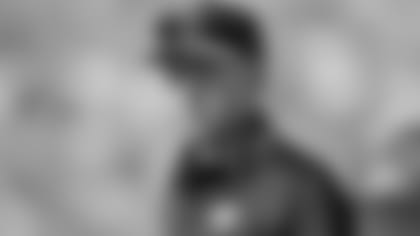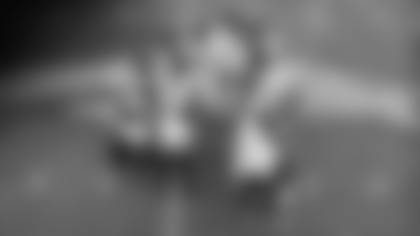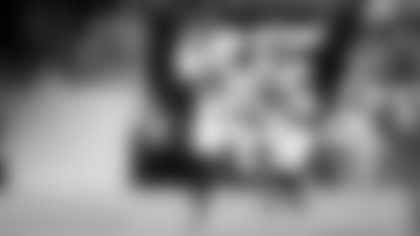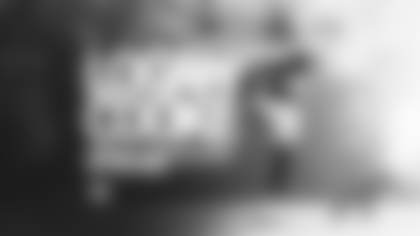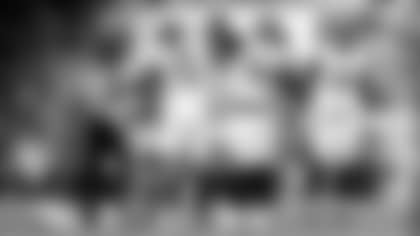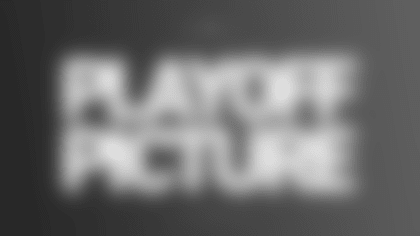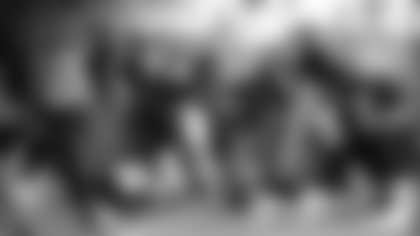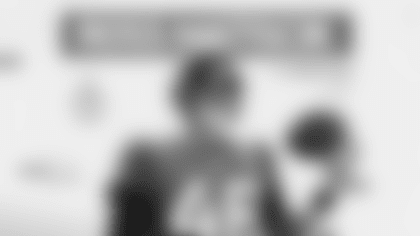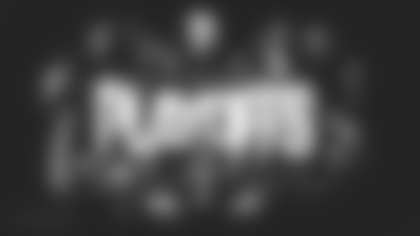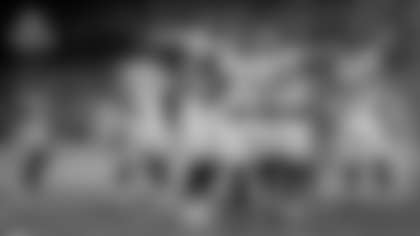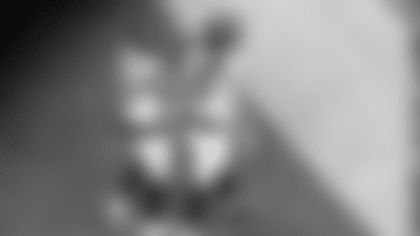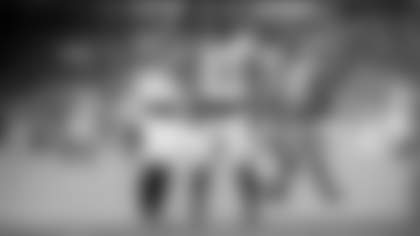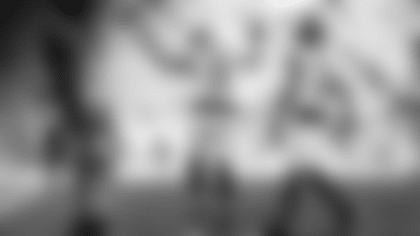JACKSONVILLE – When Mike Ryan does the math, the results are eye-opening.
They lend perspective, too. Wednesday is Ryan's 51st birthday. Having been an NFL athletic trainer for 26 years, the last 20 as the Jaguars' head athletic trainer/physical therapist, means he has been doing the job he once dreamed of doing for more than half of his life.
"It's a neat feeling," Ryan said Tuesday, "especially in this business, because a lot of people move around and change addresses. To be in one location, with such a great franchise, is pretty cool."
As of Monday, Ryan no longer will be with that franchise.
He will retire Friday, and though his plans aren't yet certain, he plans to start his own venture applying training techniques to non-professional athletes, to consult and to spend more time with family.
What is certain is the Jaguars will have one less "original" moving forward. Whereas this week the Jaguars have seven employees who have been with the organization since 1994 – the year before the team's inaugural season – as of next week they will have six: senior vice president of communications Dan Edwards, director of football technology and facilities Mike Perkins, executive assistant to the owner and president Alisa Abbott, director of ticket operations/fan services Tim Bishko, college scout Tim Mingey and pro scout Chris Driggers.
Ryan, who began his Jaguars career working in trailers outside the then-Gator Bowl in 1994-1995, spoke on Tuesday in a far different environment. The recent renovations to the team's weight room and training facility are state-of-the-art, and the temporary workspace in which Ryan once worked with Tom Coughlin is a now a memory two decades old.
Facilities aren't the only things that have changed in Ryan's tenure. He has worked for two owners, Wayne Weaver and Shad Khan, as well as five head coaches – Coughlin, Jack Del Rio, Mel Tucker, Mike Mularkey and Gus Bradley. He has worked to train and rehabilitate players from 19 teams, observing and training much of the team's history along the way.
Ryan, who is scheduled to appear on Jaguars.com LIVE! Wednesday, earlier this week sat down to discuss at length that history, reflecting on two decades with the Jaguars and more than two and a half in the NFL:
Question: So, after nearly 20 years … difficult decision, or was it just time?
Answer: Both. It was a tough decision and not one I took lightly. But knowing I had a great opportunity to spend more time with my family – a five-year-old and a two-year old – it was time. Was it something I took lightly? Absolutely not, because I love this organization. It's done a lot for me. I still remember the day in 10th grade when a guidance counselor gave me a flyer on athletic training … I said, 'That's it.' I decided that day I wanted to be an athletic trainer. There was only one place to be an athletic trainer and that was in the NFL. I ran home and told my family, 'I'm going to be an athletic trainer in the NFL.' To take that dream and turn it into a 26-year career, I can't begin to say how grateful I am and how fulfilling that really is.
Q: Give me your first memory of this stadium…
A: (Laughing ) First, when I came in for the interview, I had to find out where Jacksonville was. I was with the New York Giants at the time and for some reason, I thought Jacksonville was over by Tampa. So, first things first I had to readjust my geography so I knew where it was. But I remember driving in and seeing the upper deck just kind of hanging there, then seeing the trailers in the parking lot. I thought, 'This is an unusual set up.' I was in the Meadowlands with the Giants where you had nine professional teams in a very small area. So, I came in and thought, 'This is different.' After the interview I got a chance to see some of the area and I thought, 'This is a great town.' I'm very much an outdoorsman. To come to this place, which is an outdoor paradise … I was in heaven.
Q: You're one of seven people remaining who have been with the team since 1994. What does that mean to you?
A: A lot, because very few people know what's gone on between '94 and now. I feel very grateful that I've been able to sort of weather the storm. There's been a change of ownership and many coaches and general managers. There have been so many players come through here. I feel very fortunate to have been a part of it. Every one of those individuals I've been in contact with I've had an opportunity to learn from.
Q: What's your favorite Tom Coughlin story?
A: Our very first practice was over at Bishop Kenny in April of 1995. We go on the field, and all the coaches are there. This is our first official event. I was all excited. Everybody's on the field stretching and I'm walking around. (Then-middle linebacker) Tom McManus calls me over. He's on the ground doing his stretch and he says, 'You can't wear sunglasses.' I said, 'Yeah, right.' He said, 'Seriously, you're not allowed to wear sunglasses.' I said, 'You're kidding.' He said, 'No, coaches can't wear sunglasses.' I said, 'Well, I'm not a coach,' and I turn around and literally almost ran nose to nose into Tom. He starts screaming at me to get rid of the sunglasses. I looked around and at all of the coaches who had coached with him at Boston College and no one's wearing sunglasses. I found out afterward he wanted to be able to look people in the eye. It took a lot of lobbying and whatnot five or six years before we could wear sunglasses in practice. We had a lot of conversations and working through the eye doctors to show the importance of sunglasses – and to show we could still do our job and wear sunglasses.
Q: And that's far from your only Coughlin story …
A: Our very first meeting – June 1, 1994 – was in the trailers. I was training for my first Ironman Triathlon when we moved down here. We're in our first meeting and all of the coaches are there – there are probably 18-to-20 people sitting around a boardroom table. I'm sitting at a corner and I have my orange juice and I have my bagel. Tom's going through the rules and what the expectations are – all of the things we need to do put an organization together. I didn't realize that Tom had a Don't-Eat-in-My-Meeting policy, which – again – his coaches didn't tell me. They were sitting back watching me eat this Cinnamon and Raisin bagel waiting for the fireworks. Tom caught me mid-bite and quickly made the point that there will be no eating in his meetings. He used me as example that no one else would ever eat in his meetings. I got the message loud and clear. After that, I'd come back to my office and there would be a bagel or a muffin on my desk and there'd be a message: 'This bagel's for you – love, T.C.' So, I kind of became notorious for bagel-eating in meetings, but that only happened one time.
Q: At the same time, your memories of him must be fond…
A: I owe a lot of gratitude to Tom and (former Jaguars Owner) Wayne Weaver and all of the people who gave me a chance here. I have a lot of admiration and respect and love for Tom Coughlin. He wasn't easy to work for. You weren't going to get a lot of love or pats on the back, but I worked three summers for Bill Parcells and my first three years full-time were under Bill Parcells. So, I came into this job with no illusions of being hugged all the time and told I was doing a great job. And I was fine with that. The thing I respected about Tom was his rules from Day No. 1 were the same as the end of the year. Having consistency in his rules really makes working down here a lot easier. Tom taught me a lot. He was the boss and everybody knew it. I learned a lot about how to set policies and have a plan and how to get a lot of individuals from a lot of backgrounds aligned to focus on one goal, which was winning football games.
Head Trainer & an original Jags employee @MikeRyanFitness talks about living out his dream: http://t.co/iBZAKFF9CH pic.twitter.com/ItGmaoJbHQ — Jacksonville Jaguars (@jaguars) January 21, 2014
Q: Working with players closely during rehab, you must develop quite a bond …
A: There are a lot of them and it's something that for me is one of the most rewarding parts of this job. During the first regular-season game, a lot of times I'll keep my sunglasses on, because I'm getting teared up seeing guys who I know what they put in. They may be a tough football player, but they're also human beings who have insecurities and concerns and their identities are built around being football players. When we get to that first game and I see a player get back to doing what they love, it's a very emotional time for me.
Q: Any stand out?
A: One would be Fred Taylor. He's a prideful guy who works very hard and it really bothered me when he got labeled with the "Fragile Fred" label, because it was unjustified. He worked really hard and he had some very bad injuries that most people – and most professional athletes – would never be able to overcome. To be a part of what Fred did, to come back to the level he did, to go to the Pro Bowl, and to be in the Pride of the Jaguars – it gets me emotional thinking about it, because I know the price Fred paid to be up on that wall. He's one of a number of people who did it the right way that I'm very proud to be a part of it.
Q: You had to have seen some strange things, too…
A: Football players can be a quirky bunch. We had a player once lined up and ready to go out and he had his jersey on backward. He had his name on the front and Jaguars on the back. That makes you wonder. Some of the rituals and what guys do to get ready can be really interesting. The other thing that strikes you is the competitive nature of these guys. I remember we were playing up in Kansas City in September of 2002. It's late in the game and Kansas City kicks a field goal to tie it. I'm standing next to Mark Brunell, who's the starting quarterback. He looks up at the scoreboard and said, 'I love these kinds of games.' Two plays later, he hit Patrick Johnson for a 79-yard touchdown to win the game. That same game, (wide receiver) Jimmy Smith had pulled a hamstring three days earlier. He didn't miss a play. The whole game he kept saying, 'Give me the damned ball, give me the damned ball.' He played his tail off and helped his team win on a hamstring I wasn't sure he could get off the bus with.
Q: The special ones stick with you, don't they?
A: We've got one on our roster right now, (middle linebacker) Paul Posluszny – just a tough, competitive, prideful guy. He'll give you what he has. He broke his sternum and kept playing. We found out about six weeks later. He happened to mention in passing. He had a big lump on his sternum. You'd have a hard time rolling over in bed with that and he's playing linebacker and hitting people with a fractured sternum – and didn't want to tell anybody about it. That's a special guy. In 2011, (running back) Maurice Jones-Drew was leading the league in rushing and we went up to a game in Tennessee. He had a high-ankle sprain. Early in the game, we had a player get his lower-leg stepped on and got a bruise; didn't want to play. First play from scrimmage, Maurice re-sprains his ankle. We took the tape off and I put one of the strongest tape jobs I ever put on. He went back in and rushed for 103 yards and wound up winning the rushing title. At the end of the game, I took the guy who I didn't think showed enough fortitude to get back in the game and I put him in the same ice bucket as Maurice Jones-Drew, who showed more toughness than anyone on the roster. I made those guys look at each other because I thought those guys handled things very differently.
Q: Any others?
A: (Left tackle) Tony Boselli, (wide receiver) Keenan McCardell, (linebacker) Daryl Smith – guys like that, will they wow you in a workout? Maybe not, but they have pride and are very competitive. And they love football. They want to be around it. When you get a guy who's tough and who has prepared well and is mentally stellar – you get an all-around player who's going to give you a chance every single player. From a rehab perspective, those are the guys I want to work with. They're not all like that. People like that force everyone around him to be better. Everyone's a little different. The thing I love about it is I'm in a role where I work with players. I tell them, 'I'm not going to work on you; I'm going to work with you.' Most players get it. Most players want to work with you. Players have to understand, 'Why is that knee swelling? Why is that shoulder giving way?' They're the ones who have to give you the feedback. It takes that fire and drive of the player to pay the price in January, February and March and not wait until August or September.
Q: Favorite moment here?
A: It'd be easy to say the win in Buffalo (following the 1996 season), the win in Denver (the next week). The opening kickoff of the Hall of Fame game (in 1995). The first win in Houston (in 1995). The first time we beat Pittsburgh (in 1995). As I get toward the end, it's the little things. The first home game here after 9/11. The emotions that went on, all those firefighters who were on the field. The 10-year anniversary of 9/11, when we had the military there. Those things mean a lot to me. These guys are gone for months overseas and life is in jeopardy – that's commitment. Also, seeing former players like Tony Boselli, Fred Taylor, Mark Brunell inducted into the Pride of the Jaguars – those are special moments. You know what went into those individuals being there.
Q: You've been coming here every day for nearly two decades. On Monday, you won't. Weird?
A: It will be weird. Someone asked me, 'What am I going to do the first day?' I'll still get up and do the workout, but I promised my wife I'm going to become a great breakfast cook, so I'm going to be the breakfast cooker. Bagels and cereal just won't cut it, but building a new career is something I'm excited about it. My personal mission statement is, 'Enhance the health of others.' It's important that what I do from here on out focuses on that mission statement.


